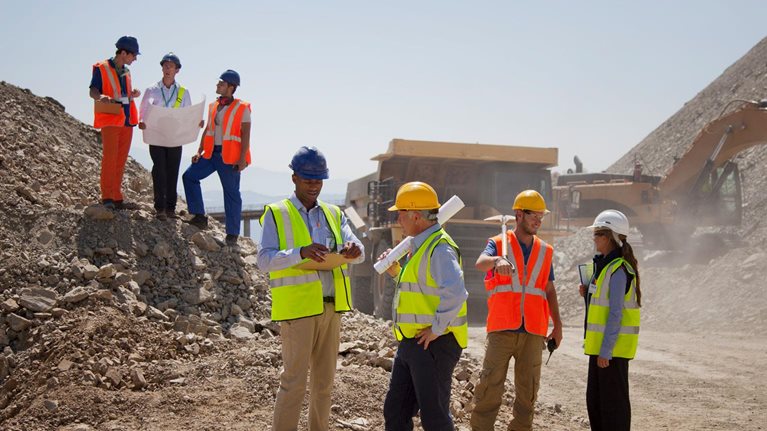An estimated $52.5 billion will be spent on construction in New York City this year—the largest amount in the city’s history. In addition to greater spend, the city has seen a trend toward building taller. In 2014, New York City had only four supertall towers, defined as 300 meters or taller. Just four years later, the city has 24 supertall towers in various stages of completion or development—an increase of 500 percent.
According to the Council on Tall Buildings and Urban Habitat (CTBUH), this is part of a global trend; 2017 was the tallest year in the history of construction. Of the 100 tallest towers in the world, 50 are in China. The United Arab Emirates has the second-tallest skylines, with 22 supertall towers, and the United States is in third place with 15.
On September 12 and 13, McKinsey’s Global Infrastructure Initiative cohosted an Innovation Site Visit with AECOM to introduce global leaders to two of New York’s largest and most ambitious projects—Hudson Yards and the World Trade Center (WTC). Hudson Yards is the largest private real estate development in US history; when complete, it will encompass more than 18 million square feet of commercial and residential space. WTC, the world’s most closely watched urban-renewal project, consists of a 16-acre mixed-use development with five iconic office towers and the 9/11 Memorial Plaza.
As part of the site visit, participants discussed the challenges facing the supertall building industry and agreed that project owners should focus on several key actions:
- Understand the global trends. According to the CTBUH, the key factors driving supertall towers are a city’s gross domestic product (GDP), available land area, global connectivity, and land-use regulations that allow tall buildings. Densely populated global cities with growing GDPs and height-friendly regulations are seeing the greatest growth in supertall towers. In New York, the boom in tall construction can be partially attributed to adaptive building laws that open the door to taller construction in exchange for much-needed investments in infrastructure–such as transit improvements and pedestrian plazas.
- Plan new developments to support modern ways of living and working. Led by millennials, demand is rising for urban areas that meet both work and life needs. In addition to offices and residential areas, new developments should include elements such as retail, entertainment, schools, healthcare facilities, and open recreational space.
- Invest in mass transit and other core infrastructure. Mass transit and related infrastructure are critical to real estate development. New York City’s investments in transit infrastructure and transit-oriented development have attracted a flow of foreign and domestic investment, helping fuel New York’s supertall tower boom. While government has a leadership role in making such investments, New York’s experience shows that private developers often follow with co-investment and partnerships to improve the transit systems and other surrounding infrastructure.
- Explore different financing models. Major capital projects have different financing needs at different phases, often requiring a variety of complex structures. Both Hudson Yards and WTC demonstrated creativity in moving anchor tenants from older buildings to new developments to create traction. They also met the needs of individual tenants by using bespoke financing models—ranging from fixed pricing for standard condo models to equity partnering on a building.
- Tackle delivery challenges using innovation and technology. The industry is ripe for disruption, and significant advances have already been made using design assist, building information modeling (BIM), prefabrication, lean construction, real-time information, and innovative safety approaches. In New York, BIM and virtual and augmented reality have improved logistical planning and efficiency throughout the construction process. As real estate projects across geographies struggle with similar challenges and develop new solutions, designers, developers, and contractors would benefit from hearing new ideas and sharing knowledge.
- Use economies of scale to invest in building superior customer experiences. Neighborhood-level developments like Hudson Yards and the WTC demonstrate how projects can go beyond the basics and invest in building customer communities. Substantial investments in curated retail offerings, marquee restaurants, and iconic structures such as the Vessel and Memorial Park have transformed major commercial real estate projects into vibrant global destinations that inspire visitors and attract new tenants. Superior customer service is another strategy that elevates the experience for visitors. For example, participants noted and appreciated the warm greeting they received from the well-dressed staff at Hudson Yards.
- Consider colocation to drive efficiencies. Outcomes are often better when contractors and supply-chain contributors join the discussion early on. Colocation of designers, engineers, and contractors has resulted in collaborative problem solving and better performance on projects ranging from Heathrow’s Terminal 5 to the WTC. Owners have seen positive results when they set the expectation for collaboration at the outset, using the contracting process and structures to encourage key stakeholders to work together.
- Beware of challenges. Some participants warned of challenges on the horizon, ranging from developers lacking the finances or inclination to upgrade older buildings to cities not keeping up with critical needs like mass transit or affordable housing. Planners and regulators need to account for these hurdles in their planning and budgeting processes.

